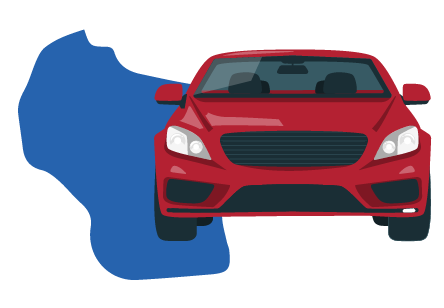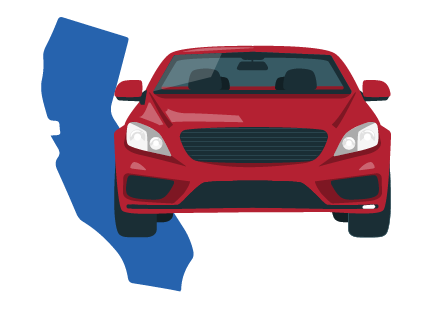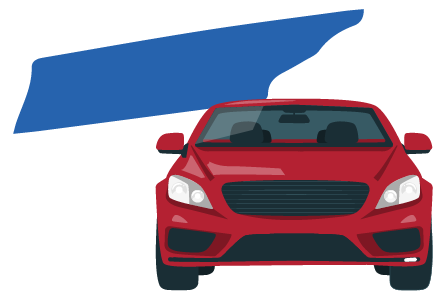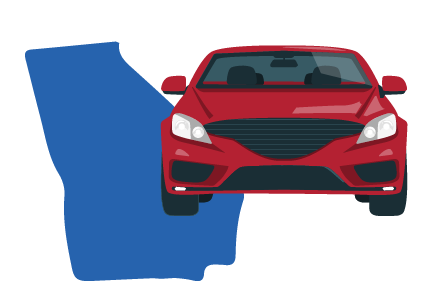As of June 1, 2010 all vehicle owners in Wisconsin must carry auto insurance. The minimum insurance requirements are liability coverage for damages to others and uninsured motorist coverage to protect against drivers without insurance.
Wisconsin is a fault state, so the at-fault driver is financially responsible for damages. Lenders may also require those financing vehicles to carry physical damage coverage such as collision and comprehensive.
Not having valid insurance or being unable to provide proof when asked can result in fines, license suspension, registration revocation, and a big financial liability in the event of an accident.
Wisconsin Car Insurance Requirements
In Wisconsin, all drivers must have car insurance or show financial responsibility through approved alternatives like a surety bond, personal fund deposit, or certificate of self-insurance. The required insurance policy must meet minimum liability coverage limits and have uninsured motorist coverage to protect you in case of an accident.
Minimum Liability Coverage Requirements
Wisconsin law requires all motor vehicle insurance policies to have the following minimum liability coverage:
- $25,000 bodily injury liability coverage per person.
- $50,000 bodily injury liability coverage per accident.
- $10,000 property damage liability coverage per accident.
These split limits mean the most your insurer will pay for bodily injury coverage per person, per incident, and property damage. Liability coverage pays for medical expenses, property repair bills, and other related expenses for third parties if you’re at fault in an accident. It also covers family members or other people driving your vehicle with your permission and often rental cars.
Uninsured Motorist Coverage
Wisconsin law also requires coverage for uninsured motorists (UM) with the minimum requirements listed below.
- $25,000 Uninsured motorist bodily injury per person.
- $50,000 Uninsured motorist bodily injury per accident.
This coverage applies when the insured, their family members, or vehicle occupants are injured in an accident caused by an uninsured driver or hit-and-run. It also covers pedestrians hit by uninsured or unknown motorists.
Policy Minimum Limit Considerations
We highly recommend purchasing liability limits higher than the minimum car insurance requirements. Severe accidents can result in damages beyond basic coverage limits, leaving the at-fault driver personally liable for the remaining costs. Increasing coverage limits can better protect your assets from lawsuits and financial hardship from catastrophic events.
Wisconsin’s insurance framework is designed to protect all road users with basic coverage, personal responsibility, and risk management through mandatory liability and uninsured motorist coverage.
Is Wisconsin a “Fault” State?
Wisconsin is a fault state, which means the driver found to be at fault in a car accident is also legally responsible for the damages. Those damages include medical bills, lost wages, property damage, and other related losses. Typically, the at-fault driver’s insurance company pays for these costs up to the driver’s liability coverage limits.
Additionally, Wisconsin uses comparative negligence to determine damages when more than one party is responsible for the accident. Under this system, each driver is assigned a percentage of fault based on their part in the accident. You can still recover if your percentage of fault is less than 51%, but that percentage will reduce your recovery. For example, if you are found 30% at fault, your total recovery will be reduced by 30%.
Optional Car Insurance Coverage in Wisconsin
In addition to the required liability and uninsured motorist coverage in Wisconsin law, drivers can access many coverage options to protect against a wide range of risks. These extra policies provide financial security when standard coverage falls short and may be required by lenders if the vehicle is leased or financed.
Comprehensive Coverage
This coverage type protects your vehicle from physical damage caused by events other than a collision. Examples include theft, fire, vandalism, falling objects, glass breakage, severe weather events, and collisions with animals. A deductible applies, and it is especially valuable in areas prone to environmental or wildlife related accidents.
Collision Coverage
Collision coverage pays for damage to your vehicle from a collision with another vehicle or a stationary object, regardless of who was at fault. This coverage ensures repair or replacement costs are covered after a crash. Damage from animals is generally excluded under this policy but is covered under comprehensive insurance.
Medical Payments (Med Pay) Coverage
Medical payments coverage pays for reasonable and necessary medical or funeral expenses for you and any passengers in your vehicle, regardless of who was at fault in the accident. While not required, Wisconsin insurance providers must offer this coverage, and the minimum threshold for benefits is $10,000.
Underinsured Motorist Coverage
This optional coverage protects you if you are injured in an accident caused by a driver whose liability coverage is not enough to cover your damages. It is not required, but Wisconsin insurers must offer this coverage, and you can decline it in writing.
Umbrella or Excess Liability Coverage
An umbrella policy provides extra liability coverage beyond your existing auto insurance policy. This type of coverage is very important in serious accidents where damages exceed your auto policy limits.
Roadside Assistance
Designed to help during vehicle breakdowns, this coverage typically includes services like towing, flat tire repair, fuel delivery, jump-starts, and lockout service. The scope and level of service vary by provider but provide peace of mind for unexpected roadside incidents.
Loss of Use / Rental Reimbursement
Suppose your vehicle is rendered undrivable due to a covered loss. In that case, this coverage helps pay for a rental car or alternative transportation expenses. At the same time, your vehicle is being repaired or replaced.
Vehicle Replacement
Some policies offer the option to replace a new vehicle with one of the same make and model in the event of a total loss, more coverage than standard cash value.
Accident Forgiveness
Some insurers offer accident forgiveness as an add-on, so your first at-fault accident doesn’t increase your premium. This helps keep your auto insurance rates stable after an isolated incident.
Adding these optional coverages to your policy can increase your financial protection, reduce personal liability, and provide more help when unexpected things happen on the road.
Consequences of Driving Without Car Insurance in Wisconsin
Driving without car insurance is illegal in Wisconsin and can cost you big time. The risks far outweigh the cost of having a valid policy, both in fines and personal liability.
Some Legal and Financial Penalties for driving without insurance in Wisconsin are listed below.
1. Fines for No Insurance
If caught driving without insurance, you’ll get a fine of up to $500. If you can’t show proof of insurance at a traffic stop or the scene of an accident, you’ll get a fine of up to $10. Presenting false proof of insurance will get you a fine of up to $5,000. That’s how serious it is.
2. Suspension of Driving Privileges
If you get in an accident without insurance, you may be subject to Wisconsin’s Safety Responsibility Law. This allows the suspension of your driver’s license and vehicle registration unless you take action. That means you will have to do some of the following listed below.
- Submitting proof that insurance was in effect at the time of the incident.
- Posting a security deposit to cover damages.
- Entering into an installment agreement to pay for damages.
- Providing a release of liability showing the matter has been resolved.
- Requesting a hearing if you contest fault or liability.
3. Vehicle Impoundment
In some cases, your vehicle will be towed and impounded until you provide proof of insurance. Reclaiming your vehicle will cost you impound and administrative fees in addition to the fine.
4. Out of Pocket Expenses for Damages
Being uninsured and in an accident means you’re personally responsible for vehicle repair costs and medical bills. In cases of serious injury or major property damage, these costs can be huge and lead to lawsuits or long term financial hardship.
5. Impact on Future Insurance Rates
Driving without insurance makes you a high risk driver, which means it’s harder and more expensive to get coverage in the future. You may be required to file an SR-22, which is proof of financial responsibility. That will raise your insurance rates and put a mark on your driving record for several years. So, driving without insurance in Wisconsin is big trouble. Get continuous and adequate coverage and keep a clean driving record.
SR-22 Insurance for High-Risk Drivers in Wisconsin
High-risk drivers in Wisconsin need to have SR-22 insurance, which is a Certificate of Financial Responsibility filed by their insurance company with the Department of Motor Vehicles (DMV). This certificate shows that the driver has at least the state minimum liability insurance.
Suppose the SR-22 is canceled or not renewed. In that case, the insurance company must notify the DMV, and the driver’s license will be suspended immediately.
SR-22 filing is required for individuals with certain serious driving offenses listed below.
- DUI convictions
- Multiple at-fault accidents or major traffic violations
- Repeated license suspensions
- Driving without insurance and being at fault in an accident
If you fall into these categories, you must keep continuous SR-22 coverage to keep your license in Wisconsin
Why you need to follow Wisconsin Car Insurance Requirements
Meeting Wisconsin car insurance laws is not only the law but also smart financially. While carrying the minimum coverage gets you legal, it may not get you enough coverage in the event of a big accident. Limited coverage can leave you on the hook for thousands of dollars in medical bills, property damage, or legal claims.
It’s often a good idea to bump up your liability limits and add optional coverages like collision, comprehensive, or uninsured motorist coverage to protect your assets and have peace of mind. These will give you more financial security and help you recover better after a crash.
To get the best value for your Wisconsin auto insurance, Insurance Navy offers free car insurance quotes. We compare rates from multiple top insurance companies. This way, you can find the cheapest car insurance that fits your needs, be compliant, and be protected without overpaying.
Frequently Asked Questions
What is the minimum liability coverage in Wisconsin?
Wisconsin drivers must have at least $25,000 bodily injury per person, $50,000 per accident, and $10,000 property damage, often written as 25/50/10, to cover costs if they cause an accident and protect themselves and others financially.
Does Wisconsin require uninsured motorist (UM) coverage?
Yes. Policies must include an uninsured motorist (UM) bodily injury of $25,000 per person and $50,000 per accident to protect drivers and passengers from expenses caused by uninsured drivers.
Can I show proof of insurance on my phone?
Yes. Wisconsin accepts electronic ID cards under 2013 Act 31, so you can show proof of insurance card on your phone during traffic stops or after an accident.
Can a cash deposit or surety bond replace an insurance policy?
Yes. You can satisfy financial responsibility with a $60,000 WisDOT cash deposit or a surety bond from an insurer instead of buying a traditional insurance policy. It’s an alternative way to meet state requirements.
What is the Wisconsin Automobile Insurance Plan (WAIP)?
WAIP is the state’s assigned risk pool for high-risk drivers who can’t get coverage in the voluntary market and need auto insurance from participating insurers.






